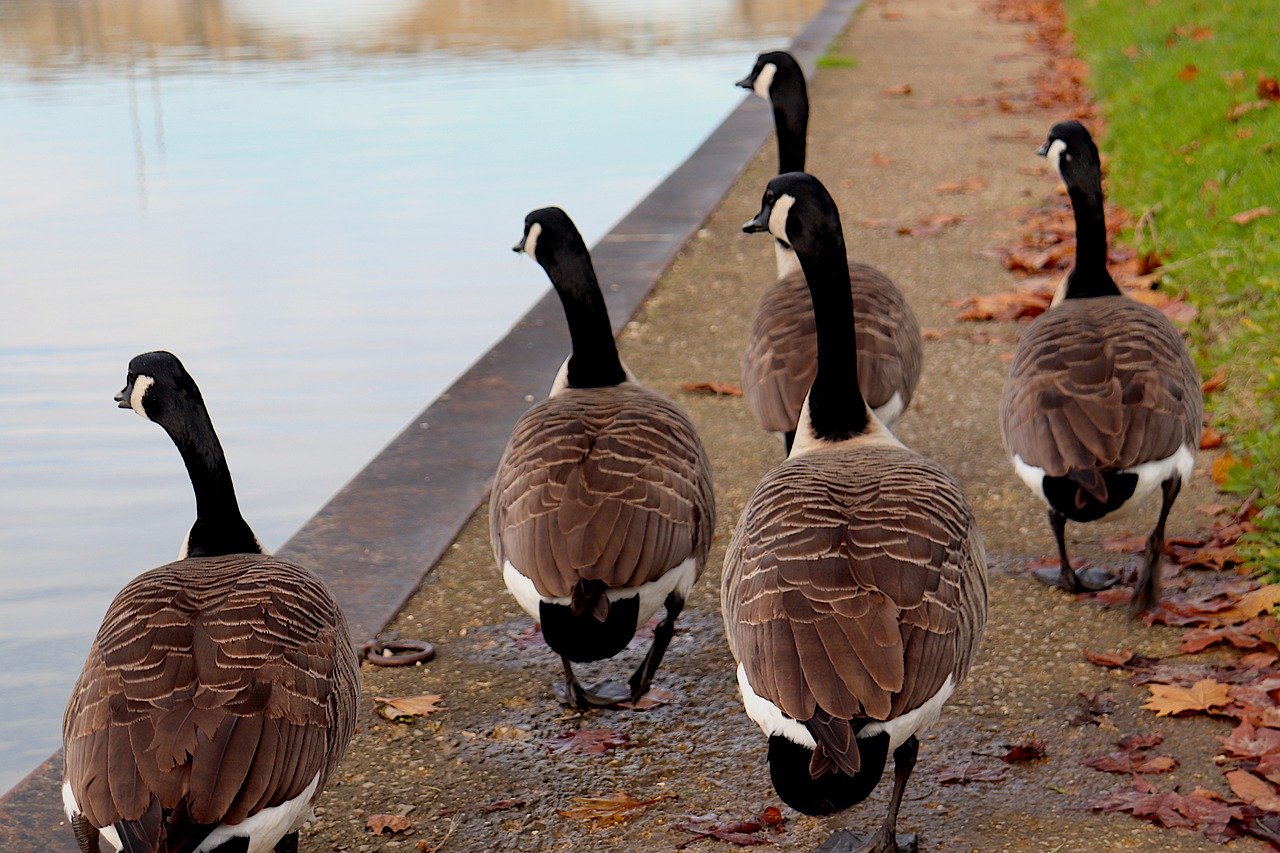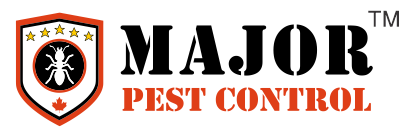Bird Control In Canada
There are so many species of birds in Canada we can not list them all here. Many can become a nuisance or a danger in some cases, and need to be effectively controlled. Here are some common birds our Edmonton pest control company often encounters as we work with clients to control their bird issues across in Canada.
Alphabetically Listed – Birds & Bird Control
Canada Goose: The scientific name of the Canada goose is Branta canadensis. They are also referred to as Canadian geese. These are large birds that are up to 110 cm in length, have a wingspan of up to 1.7 m, and have a distinctive black head and neck with a white “chinstrap” while the body and wings are beige to light brown. Canada geese may carry pathogens that can infect humans and pets and cause disease, including avian influenza, botulism, salmonellosis, duck virus enteritis, and cholera. They are loud and aggressive with the ability to injure humans and pets when attacking. They can cause other problems like overgrazing on lawns and leaving feces around buildings. When addressing Canada geese on your property, it is best to consult a trusted and reputable professional pest control company, like Major Pest Control, to ensure treatment plans comply with the Migratory Bird Treaty Act and the Fish and Wildlife Act.
House Sparrow: The scientific name of the house sparrow is Passer domesticus. House sparrows are also referred to as weaver finches and English sparrows. They are 14 to 18 cm in length and have a wingspan of 19 to 25 cm. Males have bright black, white, and brown markings, while females have feathers that are pale brown and gray. House sparrows, as the name suggests, commonly live near humans which helps protect them from predators. House sparrows may transmit diseases, some fatal, to humans, pets, and livestock, such as beef tapeworms, salmonellosis, toxoplasmosis, chlamydiosis, erysipeloid, Newcastle disease, and schistosomiasis. House sparrows are exotic pests that can cause problems ranging from destroying landscaping around the home, damaging homes and structures from nests and droppings, and displacing native birds such as tree swallows, chickadees, Eastern bluebirds, and tufted titmice through aggressive behaviors. To ensure treatment plans comply with the Migratory Bird Treaty Act and the Fish and Wildlife Act when addressing house sparrows on your property, it is best to consult a trusted and reputable professional pest control company, like Major Pest Control.
Pigeons: The scientific name for the domestic pigeon is Columba livia domestica. Pigeons are also referred to as rock doves or rock pigeons. They are 29 to 37 cm in length and have a wingspan of 62 to 72 cm. They have blue-gray plumage and iridescent throat feathers. Pigeons are common in urban areas. As the first domesticated bird, pigeons have played important roles benefiting humans, but in modern times, they are nuisance pests. Like other birds, pigeons may transmit diseases, some potentially fatal, to humans and pets, such as toxoplasmosis, salmonellosis, histoplasmosis, tuberculosis, yersiniosis, and chlamydiosis. When dealing with pigeons on your property, it is best to consult a trusted and reputable professional pest control company, like Major Pest Control, to ensure treatment plans comply with the Migratory Bird Treaty Act and the Fish and Wildlife Act.
Starlings: The scientific name for starlings is Sturnus vulgaris. Starlings are also known as common starlings and European starlings. They are 19 to 23 cm in length and have a wingspan of 31 to 44 cm. They have a black bill that turns yellow during the breeding season and glossy black plumage that becomes duller and spotted with white in the fall season. Starlings are introduced to North America and are found in the southern parts of Canada and the Pacific coast of British Columbia, in addition to migrating into the Northwest Territories during summer. Starlings are a pest species that cause many problems, from being noisy to transmitting parasites, such as fleas, mites, and bed bugs. They may transmit potentially fatal diseases to humans and pets, such as toxoplasmosis, salmonellosis, histoplasmosis, and chlamydiosis. To ensure removal efforts comply with the Migratory Bird Treaty Act and the Fish and Wildlife Act when addressing starlings on your property, it is best to consult a trusted and reputable professional pest control company, like Major Pest Control.
Woodpeckers: Woodpeckers belong to the family Picidae, members of which are found nearly globally. Woodpeckers are 7 to 50 cm in length and have a wingspan of up to 75 cm. Their plumage may be olive, brown, black, white, or red, or a combination of these. Many species have a crest (tuft of feather) on their crowns. Woodpeckers are so named for their behavior of pecking at dead or decaying trees, buildings, siding, metal, and air conditioners in order to forage for insects, create cavities for nesting or food storage, or to communicate with other woodpeckers. Their behaviors are beneficial when consuming insect pests on trees. But the loud pecking may also be a nuisance and can be damaging to homes and other structures. When addressing woodpeckers on your property, it is best to consult a trusted and reputable professional pest control company, like Major Pest Control, to ensure treatment plans comply with the Migratory Bird Treaty Act and the Fish and Wildlife Act.
Magpies: The scientific name of the black-billed magpie found in Alberta and western Canada is Pica hudsonia. They are also known as the American magpie. Magpies are 45 to 60 cm in length with a wingspan of up to 220 mm. Magpies have strongly contrasting black and white plumage and a long tapered tail. Magpies are opportunistic omnivores (eat nearly anything), including occasionally the eggs of other bird species, and sometimes create underground food caches. Like other birds, magpies may transmit pathogens that can infect humans and pets, including West Nile virus. Unlike many other pest birds, in Alberta, magpies can be hunted and trapped without a license. However to address the causes of why magpies are attracted to your property and prevent future invasions, consulting a trusted and reputable professional pest control company, like Major Pest Control, is recommended.


